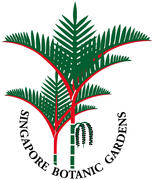Nomenclature
Accepted name/Authority/Place of publication:
Argyreiaapoensis(Elmer) Ooststr., Blumea 6 (1950) 344.
Synonyms:
Rivea apoensis Elmer, Leafl.Philip. Bot. 7 (1915) 2604.
Description
Habit:
Stems twining, sparsely appressed-pilose, glabrescent.
Leaves:
Leaves ovate, 6-10 by 3½-6 cm, base truncate or slightly cordate, apex acute to acuminate, upper surface glabrous, lower appressed- pilose, especially along the nerves; nerves 6-8 on either side of midrib; petiole 2- 3 cm, appressed-pilose.
Inflorescences:
Peduncles in the upper leaf-axils, up to 9 cm long, appressed-pilose towards their apex with yellowish- grey hairs; cymes umbellate, few-flowered. Pedicels 2-4 mm, rather densely appressed-pilose. Bracts 8-12 mm long, linear to filiform, with a narrow acumen, hairy beneath, glabrous above.
Flowers:
Sepals nearly equal in length, ca 6½ mm long, densely appressed-pilose outside; 2 outer ones elliptic-oblong, obtuse, mucronulate; sepal 3 broader, with one glabrous margin; two inner sepals broadly ovate to orbicular, with two glabrous margins. Corolla 5-parted, whitish outside, purplish or violaceous inside; tube ca 11 mm long, glabrous; lobes linear, recurved and twisted, ca 24 by 3 mm; midpetaline bands sericeous outside towards the apex, and there with two glabrous wings. Filaments with slightly dilated, thick, papillose base. Ovary glabrous, 2-celled.
Fruits:
Fruit unknown.
References:
Ooststroom,S.J. van & R.D. Hoogland. 1953. Convolvulaceae In Flora Malesiana 4:388–512.
Biogeography, Ecology and Natural History
Distribution:
Philippines (Mindanao).
Ecology:
In forests, ca 450 m,
forming dense tangled masses.
References:
Ooststroom,S.J. van & R.D. Hoogland. 1953. Convolvulaceae In Flora Malesiana 4:388–512.
Other information
Common names and uses:
Dalumosip, Bag .
General comments:
Closely related to A. barnesiiand possibly only a variety of that species.
Authorship for webpage
Editor:
Esmond Er
Contributors:

Classification:

Add new comment